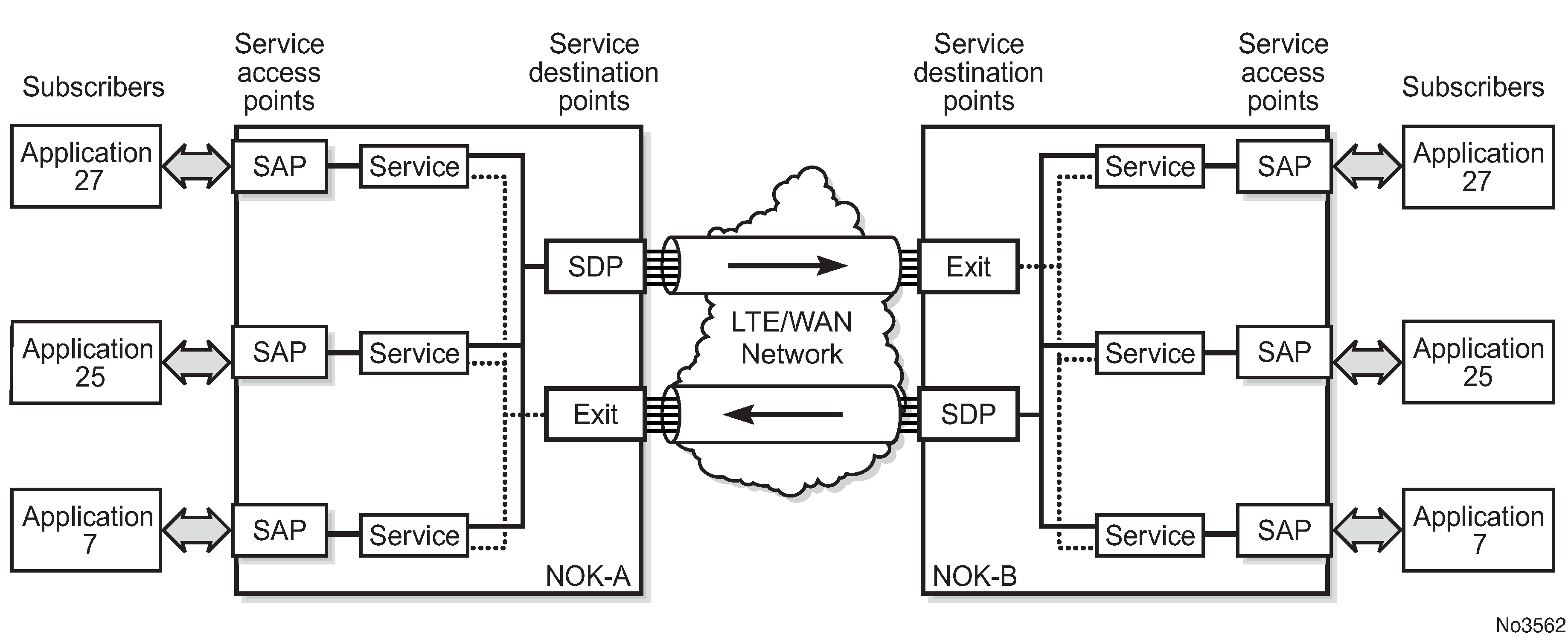The basic (logical) service entities in the service model used to construct an end-to-end service are:
Figure: Service entities and the service model shows an example of how the service entities relate to the service model. An application attachment point (for example, an Ethernet port, VLAN, or serial port) connects to a SAP. The SDPs define the entrance and exit points of service tunnels, which carry one-way traffic between the two routers (NOK-A and NOK-B). Configured SDPs are bound to a service or the service is auto-bound which automatically creates tunnels to far-end nodes. The binding of the service to SDPs is the final step in enabling the end-to-end service. In Figure: Service entities and the service model, the entrance and exit points are over the wireless interface.
Traffic encapsulation occurs at the SAP and SDP. The 7705 SAR-Hm series supports the following SAP encapsulation types:
-
Ethernet untagged or tagged
-
IP
-
raw serial character data on the serial ports
The 7705 SAR-Hm series supports GRE-MPLS encapsulation for SDPs.
For information about SAP encapsulation types, see SAP encapsulation types and identifiers. For information about SDP encapsulation types, see SDP encapsulation types.
